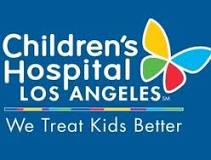A Trial of Three Types of Enemas Used to Treat Functional Constipation in Children
| Status: | Terminated |
|---|---|
| Conditions: | Constipation |
| Therapuetic Areas: | Gastroenterology |
| Healthy: | No |
| Age Range: | 4 - 12 |
| Updated: | 2/2/2019 |
| Start Date: | April 2013 |
| End Date: | December 2017 |
A Randomized Controlled Trial of Three Types of Enemas Used to Treat Functional Constipation in Children
Functional constipation is extremely common in children and is defined as painful, hard
stools or firm stools for twice or less per week. Functional constipation accounts for 3% of
general pediatric visits and up to 25% of pediatric gastroenterology visits. Constipation and
fecal impaction can lead to a range of symptoms including decreased appetite, vomiting, and
abdominal pain frequently resulting in Emergency Department (ED) presentation. In contrast to
the outpatient setting where diet and oral medications work well to relieve symptoms related
to functional constipation, ED management requires an approach with quicker results. For
immediate relief of symptoms, disimpaction via enema use may be better than polyethylene
glycol (PEG) 3350 for children. However, the type of enema to be used is not well studied.
Currently, any patient presenting to the ED with a presumed diagnosis of abdominal pain due
to functional constipation receives an oral dose of PEG and one of the following three types
of enemas (based on the ED treating attending's discretion): phosphate or Fleets enema,
normal saline enema, or mineral oil enema. There is no evidence in the literature that
demonstrates any difference in the effectiveness of each of these enemas. The investigators
propose a randomized control trial of the three types of pediatric enemas readily used in our
ED to determine the best approach. There will be three arms within this study: a) PEG plus
phosphate enema b) PEG plus normal saline enema and c) PEG plus mineral oil enema. The
physicians enrolling patients will not be the treating physicians. The four principal
investigators (blinded to the type of enema being used), following appropriate informed
consent, will obtain pain scores (Faces Pain Scale - Revised) pre- and post-administration of
each of the three treatments listed above in order to determine the best enema to use in
children 4-12 years of age. Other outcomes to be analyzed will include the patient's weight
pre- and post-administration of the enema, satisfaction ratings on a visual analog scale from
the treating physician (who will also be blinded), and parental surveys on the day of
administration and 3-5 days following discharge. Data analysis for pain scores will be
completed with repeated measures anova. Categorical values will be compared using Chi Square
analysis and continuous variables will be compared using parametric statistics.
stools or firm stools for twice or less per week. Functional constipation accounts for 3% of
general pediatric visits and up to 25% of pediatric gastroenterology visits. Constipation and
fecal impaction can lead to a range of symptoms including decreased appetite, vomiting, and
abdominal pain frequently resulting in Emergency Department (ED) presentation. In contrast to
the outpatient setting where diet and oral medications work well to relieve symptoms related
to functional constipation, ED management requires an approach with quicker results. For
immediate relief of symptoms, disimpaction via enema use may be better than polyethylene
glycol (PEG) 3350 for children. However, the type of enema to be used is not well studied.
Currently, any patient presenting to the ED with a presumed diagnosis of abdominal pain due
to functional constipation receives an oral dose of PEG and one of the following three types
of enemas (based on the ED treating attending's discretion): phosphate or Fleets enema,
normal saline enema, or mineral oil enema. There is no evidence in the literature that
demonstrates any difference in the effectiveness of each of these enemas. The investigators
propose a randomized control trial of the three types of pediatric enemas readily used in our
ED to determine the best approach. There will be three arms within this study: a) PEG plus
phosphate enema b) PEG plus normal saline enema and c) PEG plus mineral oil enema. The
physicians enrolling patients will not be the treating physicians. The four principal
investigators (blinded to the type of enema being used), following appropriate informed
consent, will obtain pain scores (Faces Pain Scale - Revised) pre- and post-administration of
each of the three treatments listed above in order to determine the best enema to use in
children 4-12 years of age. Other outcomes to be analyzed will include the patient's weight
pre- and post-administration of the enema, satisfaction ratings on a visual analog scale from
the treating physician (who will also be blinded), and parental surveys on the day of
administration and 3-5 days following discharge. Data analysis for pain scores will be
completed with repeated measures anova. Categorical values will be compared using Chi Square
analysis and continuous variables will be compared using parametric statistics.
Inclusion Criteria:
- Age 4-12 years
- Receiving enema in ED for presumed constipation
Exclusion Criteria:
- Critically ill patient
- Any history of renal insufficiency, renal disease, or elevated creatinine
- Any history of intestinal anatomic abnormality (i.e. anal stenosis, anal surgery,
bowel obstruction, hirschprung's disease)
- An inability to self-report pain
- Presence of gastrostomy or jejunostomy tube
- Any history of gastrointestinal dysmotility
- Inability to read or speak English or Spanish
We found this trial at
1
site
Childrens Hospital Los Angeles Children's Hospital Los Angeles is a 501(c)(3) nonprofit hospital for pediatric...
Click here to add this to my saved trials
